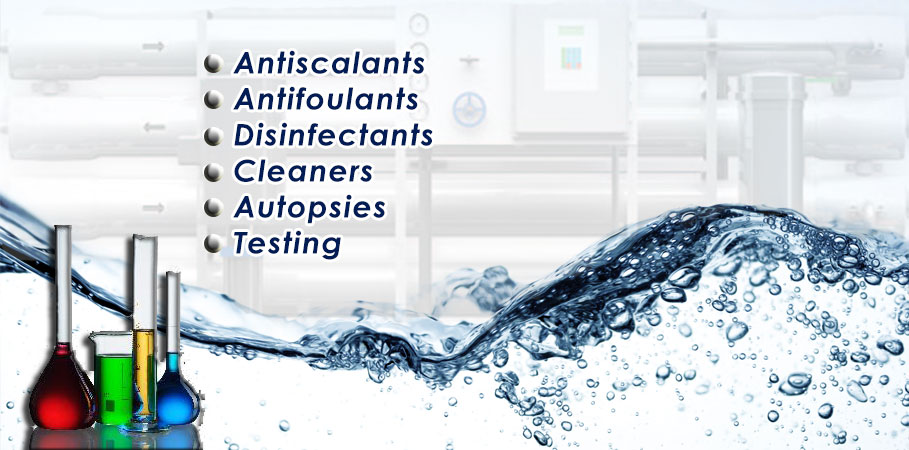RO Membrane cleaning chemicals are an important part of any reverse osmosis, nano-filtration, ultra-filtration, or micro-filtration maintenance program. For membrane cleaning, acid- and alkali-based cleaning chemicals are designed to remove most foulants and restore performance in all types of membrane systems. Products have been formulated and tested in numerous RO operating systems around the world.
Reverse osmosis (RO) anti-scalants and reverse osmosis cleaning chemicals are used as a purification technology that uses a semipermeable membrane. This membrane-technology is not properly a filtration method. In RO, an applied pressure is used to overcome osmotic pressure, a colligative property, that is driven by chemical potential, a thermodynamic parameter. RO can remove many types of molecules and ions from solutions and is used in both industrial processes and to produce potable water. The result is that the solute is retained on the pressurized side of the membrane and the pure solvent is allowed to pass to the other side. To be “selective,” this membrane should not allow large molecules or ions through the pores (holes), but should allow smaller components of the solution (such as the solvent) to pass freely.
In the normal osmosis process, the solvent naturally moves from an area of low solute concentration (High Water Potential), through a membrane, to an area of high solute concentration (Low Water Potential). The movement of a pure solvent is driven to reduce the free energy of the system by equalizing solute concentrations on each side of a membrane, generating osmotic pressure.
The process is similar to other membrane technology applications. However, there are key differences between reverse osmosis and filtration. The predominant removal mechanism in membrane filtration is straining, or size exclusion, so the process can theoretically achieve perfect exclusion of particles regardless of operational parameters such as influent pressure and concentration. Moreover,reverse osmosis involves a diffusive mechanism so that separation efficiency is dependent on solute concentration, pressure, and water flux rate.




